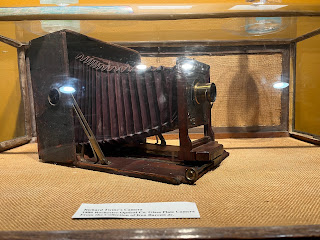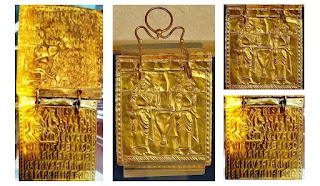Saint Augustine, FL
April 7th, 2022
First Congregation Sons of Israel is the oldest Synagogue in St. Augustine. In the late 1800s, the congregation’s first families came from Russia and Eastern Europe to settle in St. Augustine. In 1908, the community was chartered with the State of Florida. Religious services were held in members’ homes until a Synagogue was constructed. Under the leadership of Rabbi Jacob Tarlinsky and his wife, Dora, the Synagogue was dedicated in 1923, with the completion and first service on March 30, 1924. It can be found in the beautiful historic district at 161 Cordova Street. They are a conservative, egalitarian congregation. Sabbath services are conducted weekly.
In 1958, the beautiful historic stained-glass windows were obtained and installed in the sanctuary by Rabbi Jacob and Mrs. Dora Tarlinsky’s three daughters (Sarah Bernstein, Florence Feiden, and Lena Lichter). In the summer of 2013, the windows underwent a much-needed restoration. Ken Hardeman, the great-grandson of the original window artist, did this. The leftover pieces of the original windows were used to create this mosaic piece that rests above the entrance to the synagogue.
Torah, the same as Pentateuch or the Five Books of Moses, is found in the ark cabinet located at the head of the synagogues chapel. The Torah teaches the Jewish about God and gives rules on how they should live their lives. For reading in the synagogue, the Torah is written on a scroll. The scrolls are written in Hebrew, from right to left, and are traditionally read four times a week. The importance of the Torah is shown in how the scrolls are treated.
This is a Hebrew prayer book, also known as a siddur. This book contains the entirety of the time-based order of daily prayers and the Jewish liturgy used on the sabbath and weekdays for domestic and synagogue rituals. I thought about this when we were granted the ability to see this institution's Torah, written script.
The Jewish ghetto in Prague grew up in Josefov around the Old-New Synagogue (Staronová Synagoga), which was used as early as 1270. It has the distinction of being the oldest functioning synagogue in Europe, as of today is once more the heart of Jewish worship in the city. The Gothic oddity, the whitewashed temple is topped with brick gables, and its interior is simple with little changed since the 13th century. A wrought-iron grill encases the pulpit, and the Torah scrolls are contained in an Ark on the wall. Apart from a couple of chandeliers, the only embellishment is a tattered red flag bearing the Star of David hanging from the ceiling, given as a gesture of respect to the Jewish community by the Holy Roman Emperor Charles IV in 1357; the red banner close by was a gift from Ferdinand III in thanks for Jewish help in repulsing a Swedish invasion in 1648. The building has survived fires, pogroms, and sieges down the centuries, giving rise to the legend that angels protect it.
This literary component comes from the first stanza in One Hundred Love Sonnets: XVII by Pablo Neruda. "I don't love you as if you were a rose of salt, topaz, or arrow of carnations that propagate fire: I love you as one loves certain obscure things, secretly, between the shadow and the soul." I chose this stanza because God is not just a ruler but a loving father of men in the Jewish faith. They say God's love is as strong as death; although one may die, God and Israel and the love between them live on. Their relationship is not just a loving one but a covenant. Just as Neruda has a special relationship with his partner, so do the Jewish and God.


























































